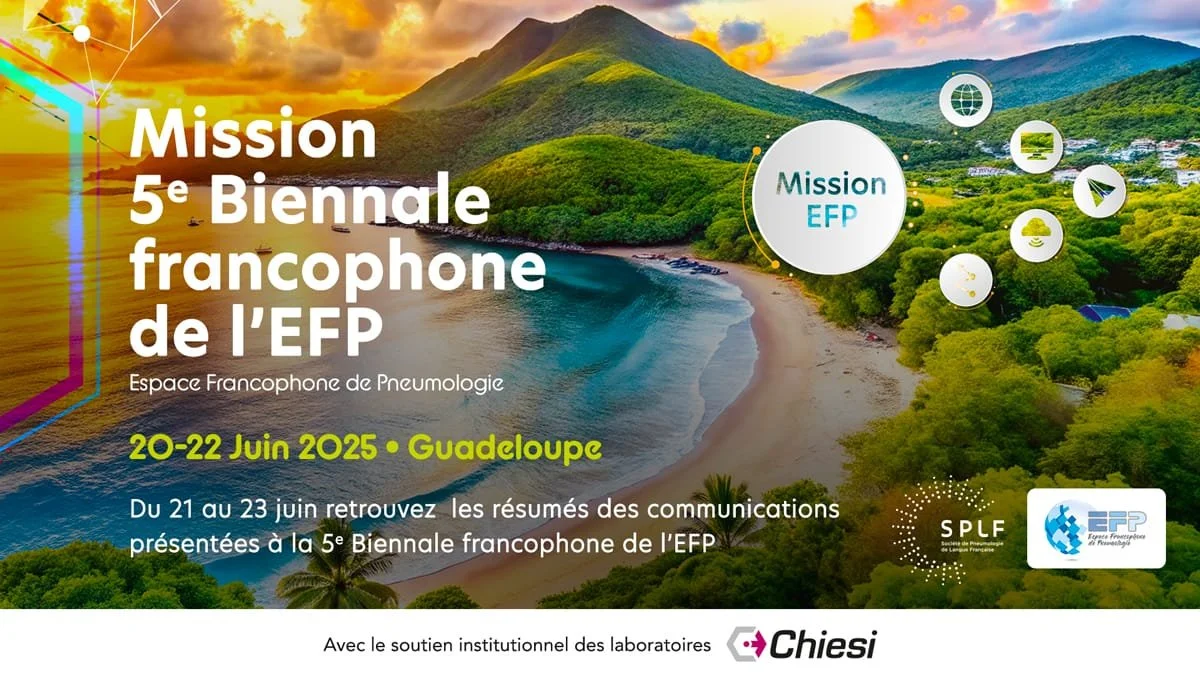SPLF Introductory Session – (Re)emerging Viruses
SPLF — Société de Pneumologie de Langue Française (Francophone Society of Pulmonology)
At the inaugural session of the Francophone Society of Pulmonology's Biennale held in Guadeloupe, Professor Hervé Fleury, MD, presented an overview of emerging viruses, emphasizing their growing impact on pulmonology through a historical, biological, and epidemiological analysis of the mechanisms of emergence, interspecies transmission, and pandemic risks.
The speaker began with filoviruses, particularly the Marburg and Ebola viruses. Although these viruses primarily cause hemorrhagic fevers, some documented cases show severe pulmonary manifestations, such as pulmonary edema or intra-alveolar hemorrhages, especially in advanced stages. Human-to-human transmission through bodily fluids also poses risks to healthcare professionals, particularly during respiratory procedures.
The Hantavirus (notably the Sin Nombre Virus, which appeared in 1993 in the United States) is a major example of a viral infection with pulmonary tropism. In humans, it can lead to hantavirus pulmonary syndrome (HPS), characterized by a sudden fever followed by acute non-cardiogenic respiratory failure with massive pulmonary edema. This condition requires rapid invasive ventilation, with a mortality rate of up to 35-40%. Contamination occurs through the inhalation of aerosols from the excretions of infected rodents.
Emerging zoonotic viruses, such as arenaviruses (Lassa) or henipaviruses (Nipah and Hendra), also induce severe respiratory damage. The Nipah virus, transmitted by fruit bats and relayed by pigs, frequently causes acute pneumonia associated with encephalitic involvement. The high fatality rate (up to 75%) and the possibility of human-to-human transmission are of growing concern in hospital settings.
Monkeypox, renamed Mpox by the WHO in 2022 (the virus was isolated in 1958 in monkeys in Copenhagen, hence its original name, although it is mainly transmitted to humans by rodents), was briefly discussed. While it is best known for its cutaneous and mucosal lesions, severe forms can lead to respiratory complications, such as viral pneumonia or bacterial superinfections, thus requiring respiratory isolation.
Professor Fleury then detailed the complexity of influenza viruses (H5N1, H7N9), with their capacity for genetic reassortment. He particularly insisted on the risk posed by an adaptation of H5N1 to mammals, which could lead to a highly pathogenic and transmissible virus among humans. This form could generate a human avian influenza with a severe pulmonary component, with respiratory distress and high mortality. Recent cases of contamination in domestic cats and marine mammals highlight the danger of a species barrier crossing.
Among arboviruses, while it is true that the majority target the vascular or nervous system, some like severe dengue or the Oropouche virus can trigger pulmonary inflammation, sometimes accompanied by pleural effusions. Crimean-Congo hemorrhagic fever, now present in Southern Europe, although mainly vascular, is not without pulmonary complications.
Regarding SARS-CoV-2, Professor Fleury recounted the lessons learned from the pandemic, including the understanding of the respiratory tropism of coronaviruses and the ability of certain variants to cause severe forms with ARDS, post-infectious fibrosis, and exacerbation of chronic respiratory comorbidities (COPD, severe asthma).
He also recalled the risks associated with MERS-CoV, transmitted by dromedary camels, whose high fatality rate is largely linked to acute pulmonary damage, and which remains a threat in the event of more effective human-to-human extension.
Finally, he mentioned more prospective scenarios, such as the emergence of a respiratory prion or the spread of viruses with severe pulmonary consequences that have so far been confined to restricted areas.
In conclusion, Professor Fleury ended on a note that was both serious and ironic, mentioning the "viruses from outer space" theory, stressing the importance of remaining open, rigorous, and humble in the face of the unpredictable.
Louise Bondeelle, Department of Microbiology and Molecular Biology, University of Geneva Medical School, Switzerland
Based on the inaugural session by: Hervé Fleury, Professor Emeritus at the University of Bordeaux – Ventum Biotech
This article was translated by Ventum Biotech. Original source: https://splf.fr/seance-dintroduction-virus-re-emergents/

